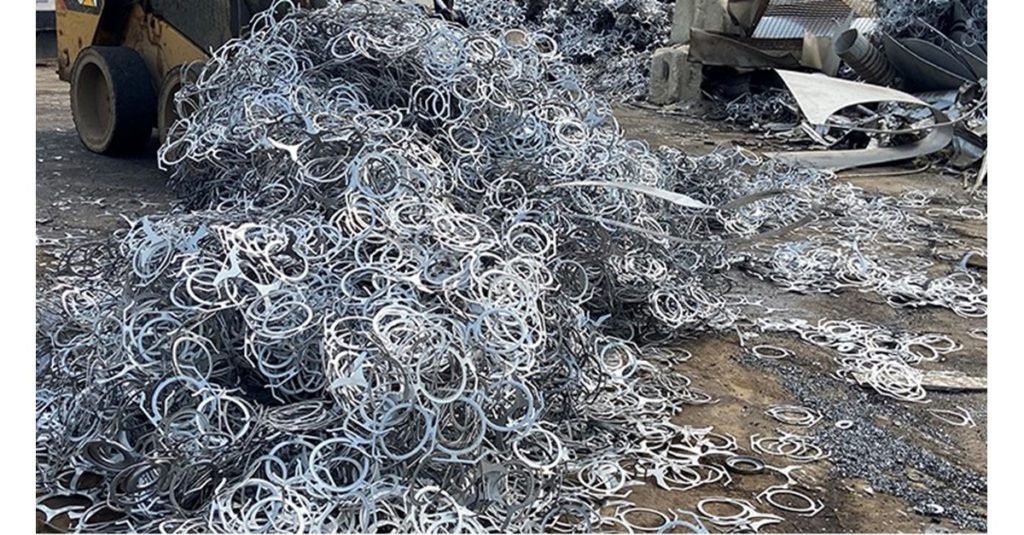[ad_1]
This May, steel mills on average were paying $185 more per ton for prime or prompt ferrous scrap compared with one ton of ferrous shred. Just three months later that cavernous gap has disappeared, with most of the premium vanishing in July and August.
Mill scrap purchases tracked by the Raw Material Data Aggregation Service (RMDAS) of Pittsburgh-based MSA Inc. from July 20 to August 19 show mills on average paying just $9 per ton more for the RMDAS prompt industrial composite grade compared with No. 2 shredded scrap.
In the RMDAS South region, the value of shredded scrap, at $425 per ton, actually exceeded the $418 per ton mills paid for prompt grades. The loss of a premium for prompt scrap has not been seen since the COVID-19-restrictions era of March and April 2020.
A drop in obsolete (shredder feedstock) scrap generation likely is playing a role, as is increased overseas demand from buyers who bid almost exclusively for shred and heavy melting steel (HMS) rather than prompt scrap. Efforts to upgrade the quality and chemistry of shredded scrap also could be a factor.
On the scrap generation side, lower scale prices combined with unpleasantly hot weather has tempered the enthusiasm of peddlers, leading to restricted scrap flows into some yards. Nathan Fruchter of New York-based Idoru Trading characterizes the peddler dilemma this way: “Extreme heat is offering a disincentive for some scrap collection. With high truck fuel prices, it costs the collector much more to gather in his scrap and bring it to yards. For what? Just to bring it to a yard and see a low scale price?”
On the demand side, buyers from India have stayed in the market throughout the spring and summer while some other overseas buyers of shred and HMS may be returning to shop around at U.S. ports. Says Fruchter, “Recent U.S. East Coast export activity may be what is needed to help ferrous scrap pricing rise from its recent drop. Export sales were weak in July; I would even venture to say close to non-existent, with Turkish buyers practically abstaining from any buying. As August began, these buyers realized they had stayed out of the buying arena for far too long, so they needed to buy.”
The Turkish economy, however, remains a source of wider concern. In late August, metals information service Davis Index is reporting buyers from Turkish mills are again pulling back from the market, tied to concerns about “challenging” finished steel product sales.
In the domestic mill market, a sustained surge in prompt grade prices has provided momentum to long-lasting efforts by shredding plant operators, sorting technology providers and some mill buyers to boost shred as a substitute for prime grades.
Among mill buyers, Indiana-based Steel Dynamics Inc. (SDI) has gone on the record with its desire to melt more shredded scrap. “In the last 18 months, our recycling and steel teams have worked closely in developing a higher quality shredded scrap that can be used in place of prime scrap,” SDI chair, president and CEO Mark D. Millett told industry analysts this spring.
SDI Executive Vice President and Chief Financial Officer Theresa Wagler has reiterated the firm’s commitment to the strategy, telling Recycling Today SDI continues to work with its own OmniSource business unit and other scrap suppliers to upgrade ferrous shred to produce a grade she says is “almost like a prime type of shred.”
As the summer winds down, scrap processors will be anxious to see if the overall downward ferrous scrap pricing trend can be reversed in September. Although the $284 per ton plunge in prompt scrap pricing since May could be the most noticeable aspect of the market, August also marked the third straight month in which all grades dropped in price.
Yet to be seen is whether difficulties in accessing scrap exported from Europe, where low Rhine River water levels are slowing barge traffic, will result in increased interest in U.S. scrap from overseas buyers.
[ad_2]
Source link

